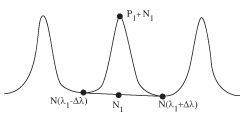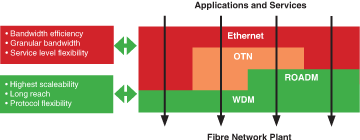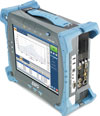
The increasing demand for network convergence and multiservice support is forcing service providers to consider new approaches for efficiently and cost-effectively transmitting various data types over a common network infrastructure, translating into reduced operational expenses and capital expenditures and driving faster returns on investment.
However, the unpredictable timing, rate and type of service indicate that the network must be scalable and flexible enough to address these requirements on demand. As a result, today’s network operators are deploying reconfigurable optical add/drop multiplexers (ROADMs) for bandwidth flexibility and operational efficiency.
ROADM-based networks are enabling an automated optical layer with dynamic multipoint connectivity, independent wavelength add/drop, remote bandwidth allocation and enhanced power management capabilities. In the process, ROADMs are eliminating the intermediate regeneration points and unnecessary O-E-O transitions in the network, resulting in lower installation costs, simplified network management and realtime service provisioning. However, ROADM deployments and turning up their supported services add new challenges and come with many constraints on existing networks. For example, with the use of ROADMs, the insertion loss per node and also per channel increases from 3-6 dB to approximately 12 dB; and with all channels not always travelling the same path, measuring optical loss per channel for different ROADM configurations becomes a necessity. The optical spectrum analyser (OSA), being a very agile tool for spectral characterisation, will be the instrument of choice for the optical power budget assessment of the ROADM.
Typically, once ROADMs are deployed, optical signal-to-noise ratio (OSNR) measurement is an excellent way to provide a direct representation of all the optical noise effects and an indirect appreciation of the overall performance of the system in a very short period of time. OSNR is generally measured by using the interpolation method, as recommended in IEC 61280-2-9 and shown in Figure 1. This method is based on the assumption that noise level is generally flat between and under adjacent peaks. By using an OSA that has the appropriate wavelength resolution and optical rejection ratio, one can determine the noise level between adjacent peaks from the appropriate use of cursors on the trace. The noise value under the peak can then be interpolated, which is also illustrated in Figure 1. The computed OSNR is then the difference between the peak power and the noise under the peak.

Unfortunately, in ROADM-based networks, the typical noise shape is not maintained. The fact is that while the optical channel is being filtered by the ROADM’s mux/demux, the optical noise under that channel peak is being carved. Therefore, using the interpolation method underestimates the existing noise value on the exiting channels, which results in an inaccurate OSNR measurement (up to 10 dB). With ROADMs deployed in the field, the new approach for meaningful, precise and repeatable OSNR measurement is to determine noise directly inside the channel limits, which is possible with an OSA capable of measuring in-band OSNR. For more information on ROADM-based networks testing, refer to the ROADM section in the application pages of Exfo’s website (www.exfo.com/en/applications/roadm.aspx)
There is also an indirect relationship between OSNR and bit error rate (BER). Higher OSNR, which occurs when the signal is much larger than noise, leads to better performance and lower BER. Optical network operators want their networks to operate at low error rates and typically look for BERs in the order of 1x10-12 to 1x10-15. The required bit rate on a specific optical link can be extrapolated to a required OSNR. If the measured OSNR is higher than what is required for delivering the desired BER, additional margin exists in the optical link, which can be used to transmit more wavelengths, send signals over a longer distance or increase the bit rate of the transported data – all of which improve overall capacity.
An industry standard – complementary to ROADM technology – is the optical transport network (OTN) standard, known also as the ‘digital wrapper’ or the ‘ITU-T G.709 standard’. This OTN standard addresses the growing migration of packet-based services such as Ethernet and Fibre Channel onto optical transport with defined operations, administration and maintenance (OA&M) procedures. OTN also provides a standardised forward error correction (FEC) mechanism, making it possible to extend the distance of fibre transmission or to reduce the power required to reach an equivalent distance. Therefore, using FEC results in more accommodated DWDM wavelengths, improved optical channel performance and better deployment economics – as summarised in Figure 2.

Taking advantage of its modular products, Exfo is introducing a small, high-performance, portable solution for spectral characterisation and next-generation networks testing; combining the FTB-5240S-P in-band OSA and the FTB-8130NGE Transport Blazer in the newly launched four-slot FTB-500 platform and providing users with an all-in-one solution that supports a mix of optical spectrum analysis along with OTN, SONET/SDH, Ethernet and Fibre Channel testing capabilities. This multitechnology test platform is a suitable solution for field, central office and lab applications.

The innovative design of Exfo’s FTB-5240S-P OSA uses fundamental spectral differences between signal and noise, namely that an optical signal is polarised and noise is not, and also that the shapes for signal and noise in the channel are very different. The instrument takes advantage of built-in polarisation diversity detection combined with a polarisation controller to measure the power versus the wavelength on two polarisation axes for multiple polarisation states; thereby discriminating between the polarised and non-polarised power and isolating the noise from the signal inside the channel. Relying on sophisticated algorithms that work concurrently on the signal shape enables the user to automatically achieve accurate and repeatable OSNR measurements in ROADM-based networks. Furthermore, the FTB-5240S-P supports over 90 dB dynamic range per scan and offers an automated channel discovery feature for simplified test setup and measurement.
Additionally, the FTB-8130NGE Transport Blazer module offers complete OTN testing capabilities for commissioning 10 Gbps OTN links in ROADM-based networks, including OTN trace messages for establishing connectivity, frequency analysis and BER testing for validating error-free transmission. As for qualifying the customer interfaces of ROADMs, the FTB-8130NGE module offers testing capabilities for qualifying SONET/SDH and 10 GigE LAN services over OTN networks. This is in addition to its supported 10 Mbps – 10 Gbps Ethernet BERT and RFC 2544, as well as 1x/2x/4x/10x Fibre Channel BERT and round-trip delay testing capabilities for end-to-end qualification of Ethernet and Fibre Channel services in the network, providing a baseline for service providers to define service-level agreements (SLAs) with their customers.
Finally, designed primarily for testing ROADM-based networks, Exfo’s FTB-5240S-P and FTB-8130NGE combined solution in the newly launched FTB-500 platform support a wide range of testing capabilities enabled through software options as needed, including in-band OSNR measurement for qualifying OTN performance of newly commissioned links, standard and over-clocked OTN for commissioning the transport layer and DSn/PDH, SONET/SDH, Ethernet and Fibre Channel services for qualifying all ROADM supported interfaces. Thanks to its innovative design, the FTB-500 platform supports the ability to run the FTB-5240S-P and FTB-8130NGE modules simultaneously for fast network commissioning and turn-up. This is in addition to its supported battery operation, remote management and integrated optical tools.
For more information contact Chris Nel, Lambda Test Equipment, +27 (0)12 349 1341, chris@lambdatest.co.za, www.lambdatest.co.za
| Tel: | +27 12 349 1341 |
| Email: | ockie@lambdatest.co.za, support@lambdatest.co.za |
| www: | www.lambdatest.co.za |
| Articles: | More information and articles about Lambda Test |

© Technews Publishing (Pty) Ltd | All Rights Reserved